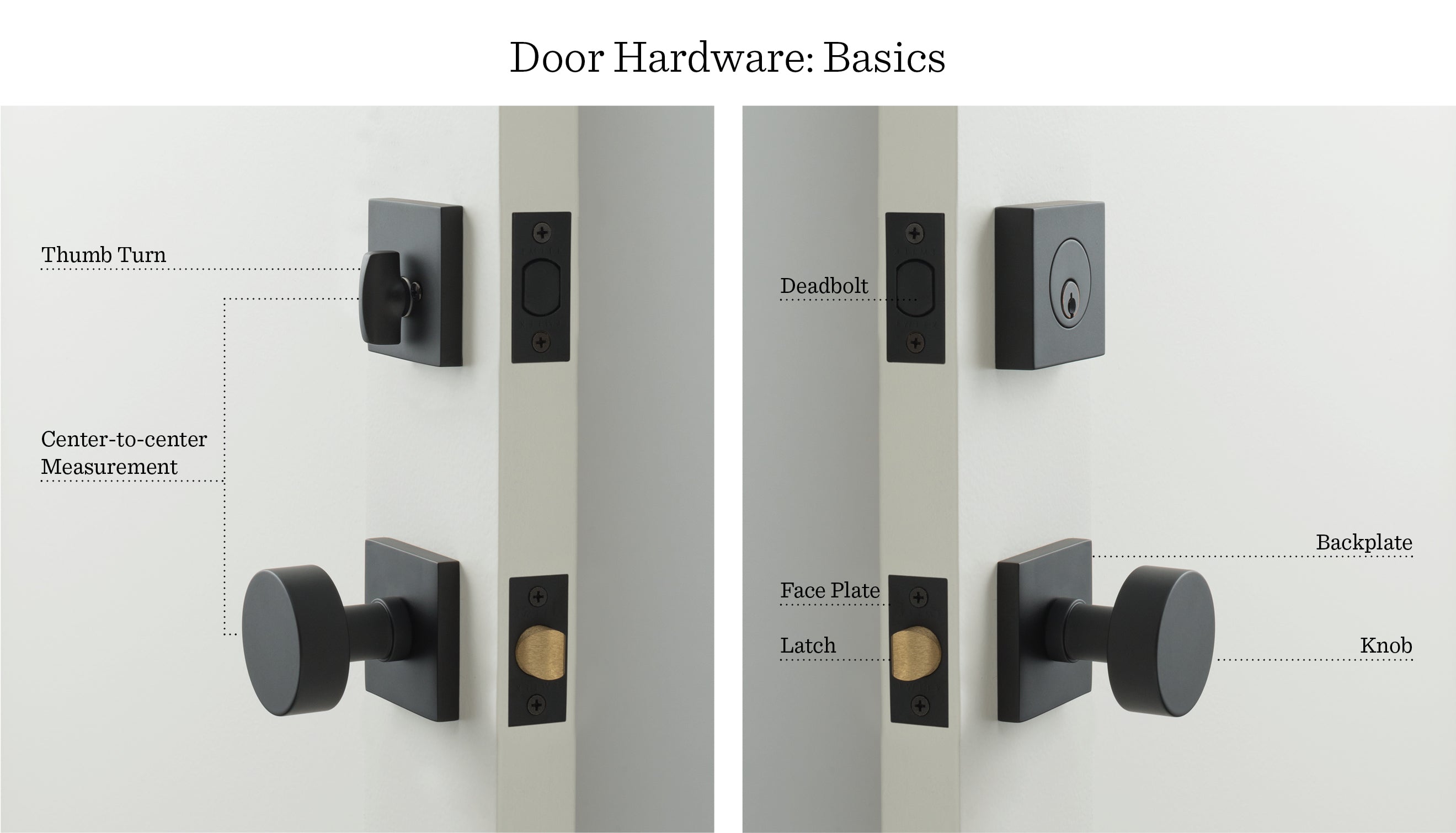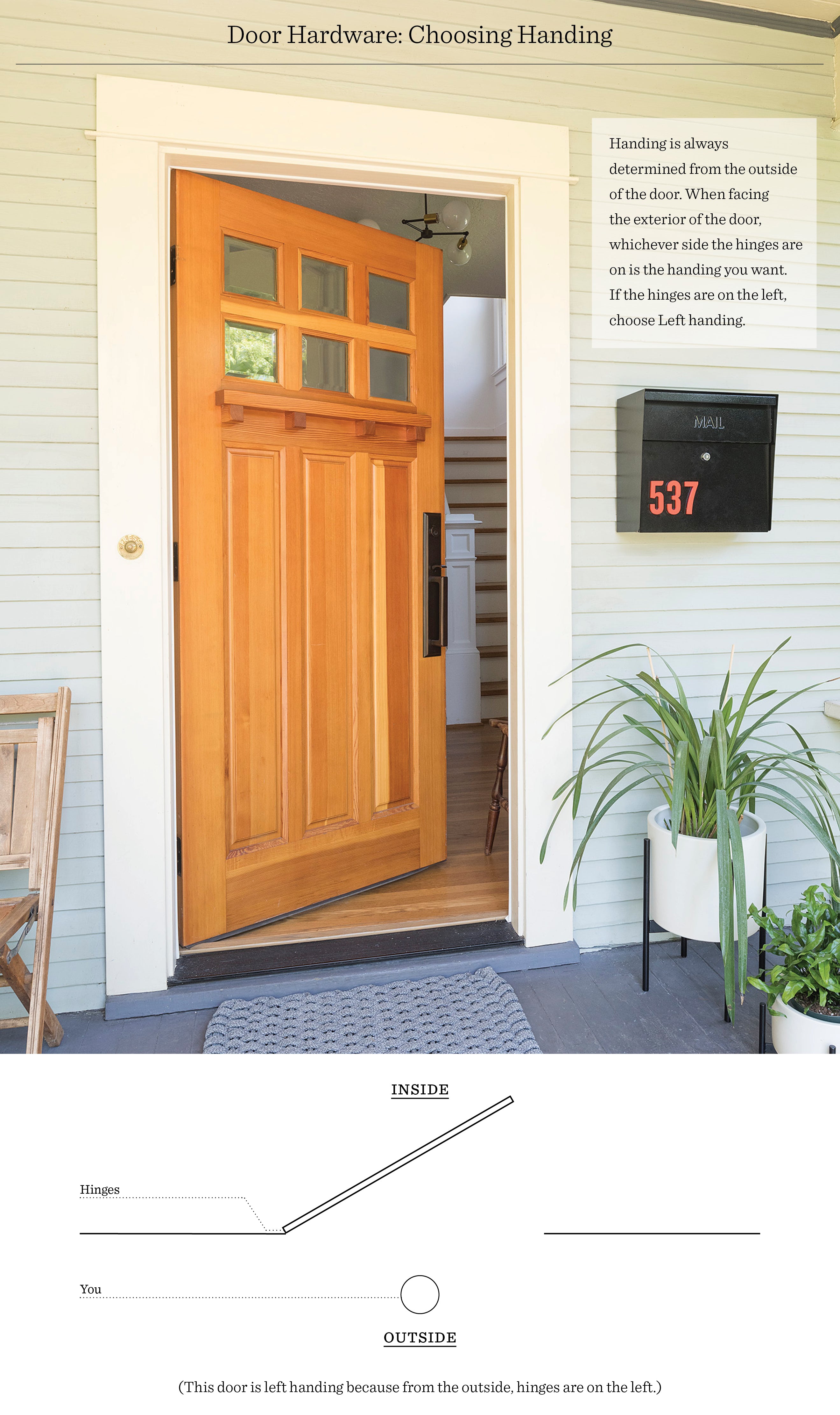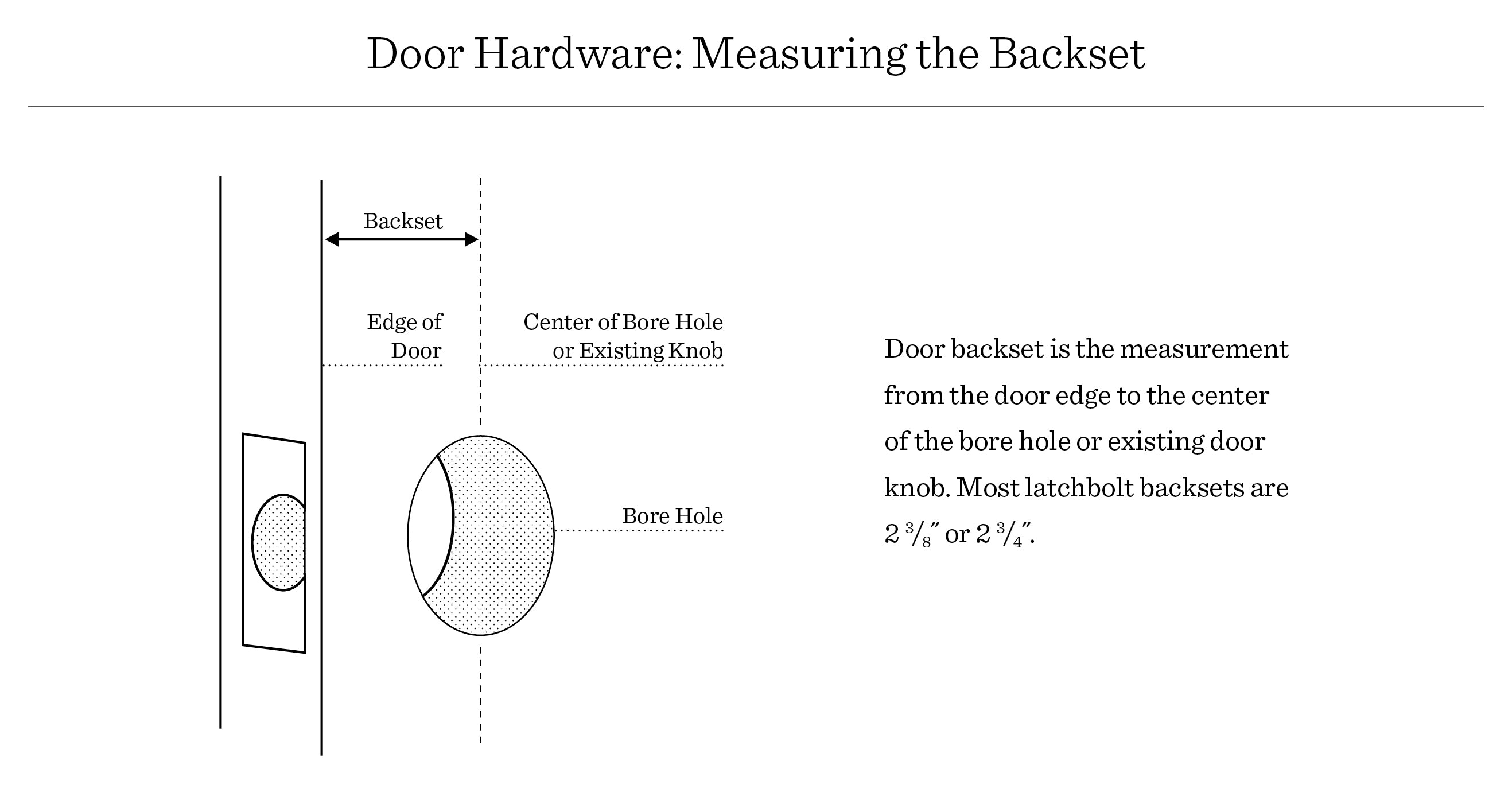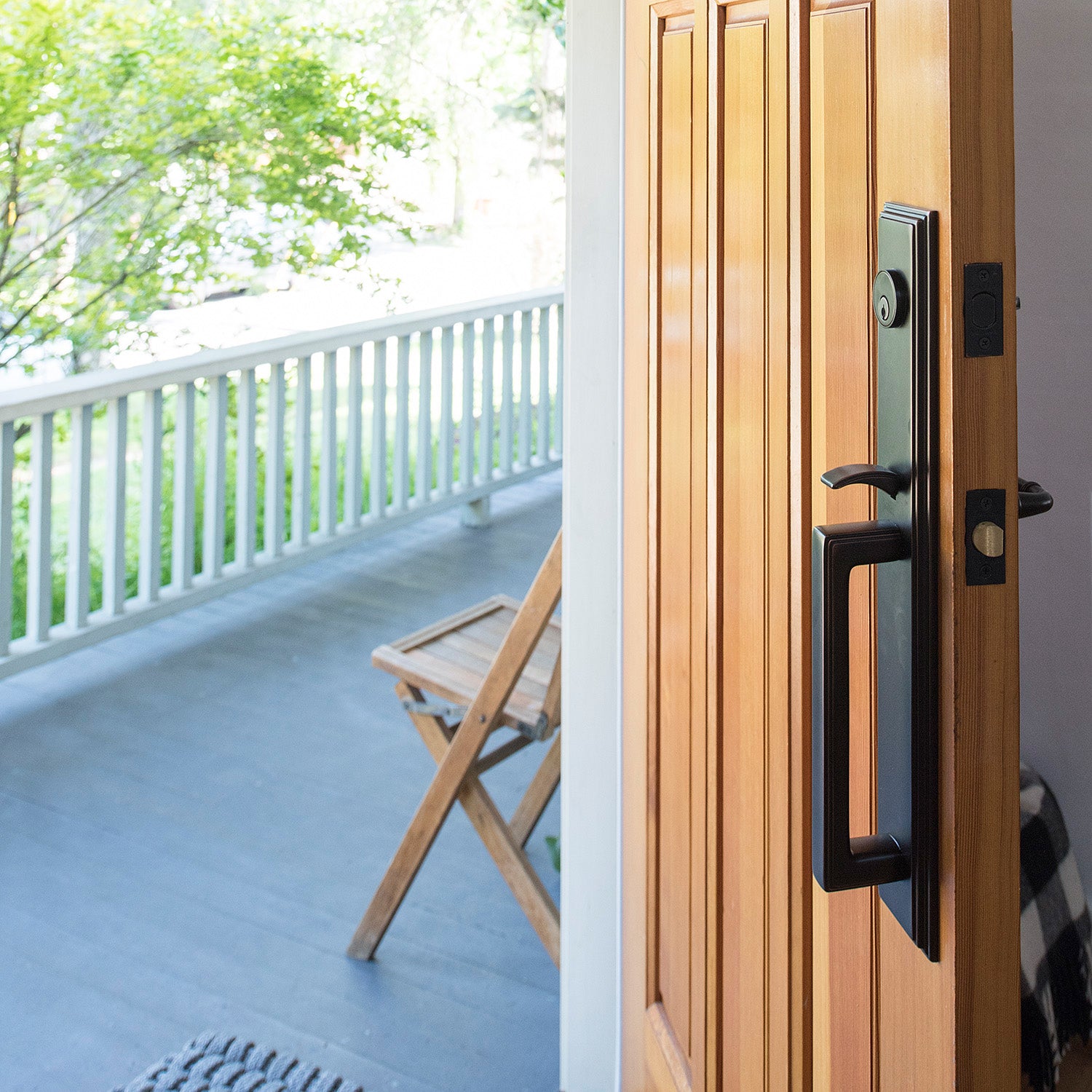Door Hardware Buying Guide

When considering new door hardware, many people's first concern is finding the perfect style and finish to complement their home. That’s certainly important, and for many, choosing the look of their new hardware is the fun part. But what’s equally or even more important to consider is the layout and functionality of the hardware, which is the step most customers find confusing. To take the guesswork out of the process, we’ve created this simple guide to choosing the correct door hardware for your home.
Be Deliberate with Preparations
An old adage in carpentry is “measure twice, cut once.” A similar rule applies with buying door hardware: take all of your measurements and then double check that they are correct before making your purchase. This is important because our Emtek door hardware is non-refundable. If you have any questions about the process, reach out to our customer service team before you buy. Having a second set of eyes on the problem can make all the difference in the world.

Door Hardware Functionality
The first thing you’ll want to consider when buying door hardware is the location and purpose of the door with which the hardware will be used. Are you outfitting a closet door? A front entryway? A bathroom door? The door hardware will correspond with the door’s function. The main types of door hardware functionality are: keyed, passage, privacy, and dummy. The graphic below explains the differences.

Door Handing
Next, determine your door’s “handing,” which is just another way of saying look at which way the door opens. Handing is always determined by facing the door from its exterior. (A note about door handing: Generally, if you’re standing on the exterior of the door, it will open away from you, although this is not the case for closets, pantries, and other similar locations. If you’re on the exterior of the door and the door opens towards you, that doesn’t change the handing.)

Blank Door or Pre-Drilled?
Because different door hardware requires different borehole arrangements, it’s important to think about whether you’ll be buying hardware for a door that already has holes drilled or if you’ll be drilling the holes yourself. If you’re simply replacing the hardware in an existing door, you’ll need to measure its boreholes. New doors are often either blank or have boreholes pre-drilled. If you’re planning to buy a door with pre-drilled holes, make sure to contact the manufacturer to get accurate measurements. Avoid making an assumption about the borehole measurements because measurements, especially backset, can vary between manufacturers.
Taking Measurements: Backset & Borehole Spacing
If you plan on using a door with holes that have previously been drilled, you will need to take the following measurements:
Backset:
Door backset refers to the distance from the door edge to the center of the bore hole. Most backsets measure either 2 3/8 inches or 2 3/4 inches. (If your door backset measurement isn’t 2 3/8 inches or 2 3/4 inches, call our customer service team). Watch our video below for a complete visual on measuring your backset.

Borehole Spacing:
For door hardware that requires two boreholes (this usually includes hardware with locks and deadbolts) it’s necessary to measure the distance between the boreholes as well as the width of the boreholes themselves. Doors pre-drilled to industry standards have two bore holes, each 2 1/8th inches in width, spaced 5 1/2 inches from the center of one borehole to the center of the next borehole.
Some types of interior hardware require a closer center-to-center measure, while other hardware sets require smaller boreholes. Keep this possibility in mind when shopping for door hardware because some hardware isn’t compatible with standard door borehole format.

Keying
The final consideration is keying. All of our Emtek door hardware sets use a Schlage C Keyway and each set comes with two keys. And that’s it! With this information in hand, you should be all set to buy your new hardware.